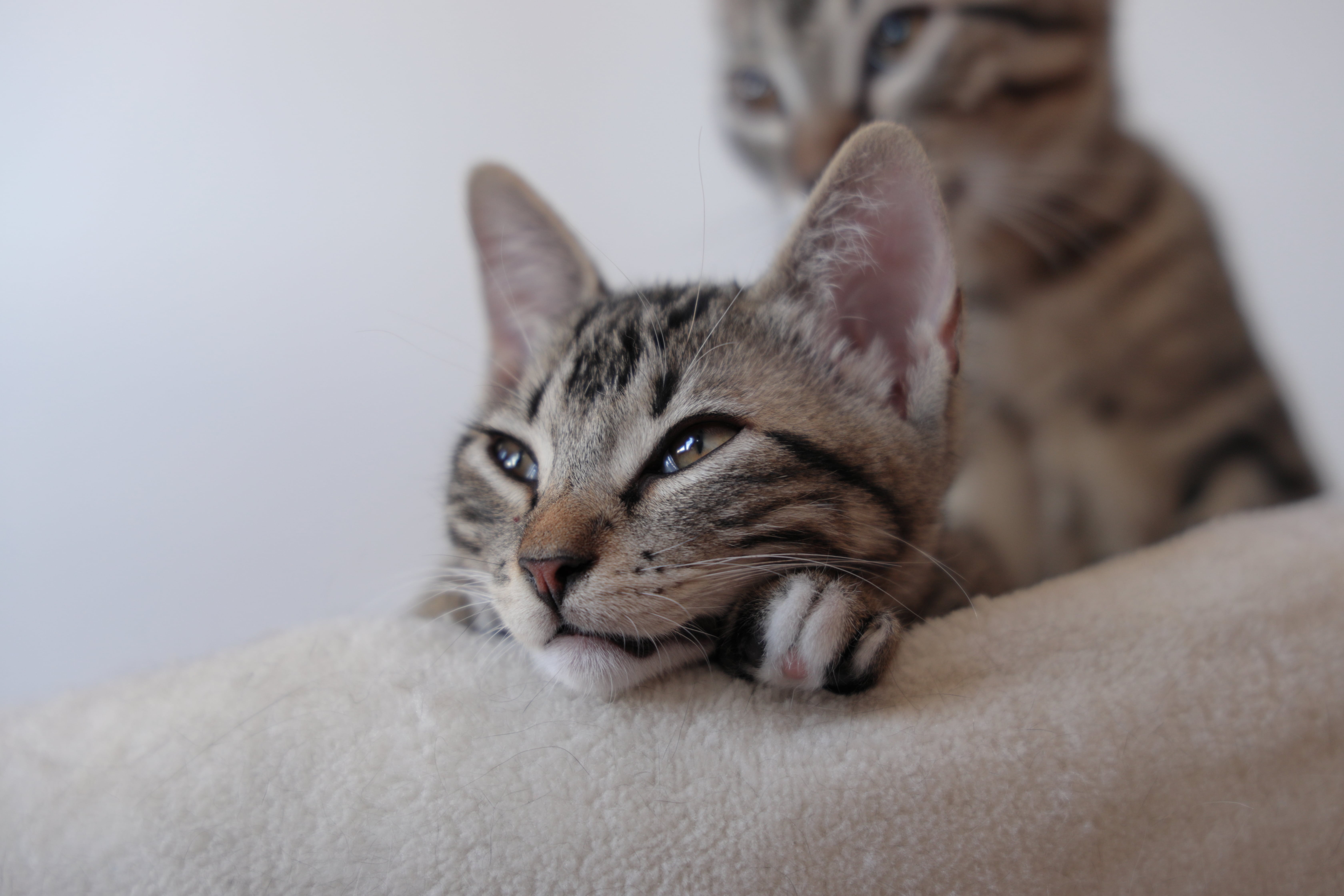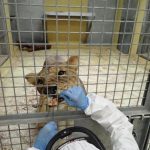Animal Pets and the Monkeypox Virus

The monkeypox virus (MPXV) belongs to the Poxvirus family, which are large-sized (200-400 nm) and double-stranded DNA viruses. This virus was first described in non-human primates used as experimental animals in 1958 in Denmark and the first infection in humans was not described until 1970, and the zoonotic nature of the virus was established.
Two phylogenetic groups of MPXV are described, which would essentially correspond to the geographic areas of Central Africa, with more virulent strains, and West Africa. Until 2003, all cases of MPXV infection in people outside the African continent were imported cases that had acquired infection in some of the endemic areas of Africa. That year, an import of African rodents into the United States caused a chain of transmission to dogs in the prairies, and from these to people. A total of 71 people were infected in this zoonotic episode, and under no circumstances was any community transmission observed.
In recently detected outbreaks (May 2022) in different parts of the world, the existence of community transmission between people has been confirmed, despite the origin of the infection not yet determined. The most likely hypothesis is that there have been one or several original zoonotic transmission events and that transmission between people has been generated from them.
The fact that there has been community transmission has caused concern about the possibility of anthropozoonotic transmission, that is, that the virus can be transmitted from people to animals, and more specifically to pets. Eventually, a transmission situation to wild animals susceptible to infection (especially rodents) could cause the generation of MPXV animal reservoirs outside Africa.
This problem of the possible transmission to domestic animals has led various international health agencies to make recommendations on how to prevent it. What does the European Centre for Disease Prevention and Control (ECDC)’s guide document or recommendations regarding animals say (of relevance) …
- “There is a potential risk of human-to-animal transmission in Europe, therefore close intersectoral collaboration between human and veterinary public health authorities working from a ‘One Health’ perspective is needed to manage exposed pets and prevent the disease from being transmitted in wildlife. EFSA is not aware to date of any reports on infections in animals (pets or wild animals) in the EU”. (Page 2).
- “However, MPX outbreaks in animals in laboratories and zoos, with no clearly identified source of infection, have been reported outside the African continent [38-40]”. (Page 4).
- “No cases of monkeypox virus transmission through substances of human origin have ever been documented. However, there are reported cases of virus transmission from mother to child during pregnancy [71], and animal studies show the presence of virus in blood, tissues, and organs of infected animals.” (Page 7).
- “Currently, little is known about the suitability of European peri-domestic (mammalian) animal species to serve as a host for monkeypox virus. However, rodents, and particularly species of the family of Sciuridae (squirrels) are likely to be suitable hosts, more so than humans (see disease background), and transmission from humans to (pet) animals is theoretically possible. Such a spill-over event could potentially lead to the virus establishing in European wildlife and the disease becoming an endemic zoonosis. In the US, there is no evidence that the virus became enzootic in wildlife, however, animal health authorities carried out systematic surveillance and an aggressive campaign for exposed animals during the 2003 outbreak [41]. The probability of this spill-over event is very low.” (Page 8).
- “Public health authorities should work together with veterinary authorities to ensure capacity is in place for quarantining and testing of mammalian pet animals that have been exposed or are at risk of exposure (i.e., pets of a close contact of a MPX case) to MPXV. Rodent pets should ideally be isolated in monitored facilities, complying with respiratory isolation (e.g., a laboratory) and animal welfare conditions (e.g., government facilities, kennels or animal welfare organizations), and tested (by PCR) for exposure before quarantine ends. Euthanasia should only be a last resort reserved to situations where testing and/or isolation are not feasible. Other mammalian pet species could be isolated at home if animal welfare conditions allow it (e.g., availability of an enclosed outdoor space for dogs, regular veterinary checks to assess the health status, preventing access to visitors, preventing pets from leaving the home).” (Page 9).
- “Monkeypox is currently not listed as a disease under surveillance [80] in the EU/EEA , nor is the virus notifiable in animals under Commission Implementing Regulation 2018/1882.” (Page 9)
- “More information is also needed on possible contact with animals. In addition, studies are needed to assess the vulnerability of European rodent and other mammal species to MPXV.” (Page 15).
From the reading of the sections, it is noted that no presence of the virus has been described to wild animals, or pets, Europeans yet (paragraph 1), since Community transmission between people would probably take only a few weeks to the continent. Most relevant is indicated in excerpt 4 where a direct zoonosis case with a long quarantine of human infections, the situation mentioned in 2003 in the United States, did not generate detection of the virus again in the animal compartment (reverse zoonosis). The possibility of reaching the wild compartment would be very low as transmission requires prolonged direct contact with infected persons or fomes containing many viruses.
The extract that adds uncertainty (the seventh) is one in which it is said that there is not enough information about the susceptibility of native rodents but also of many rodents (of company) and other pets (such as dogs and cats) to the MPXV. It also points to the prevention of extract 2, which states that there have been cases of animal infection outside Africa, but all the studies cited refer to non-human primates, which would not be included in what we understand as pets. As a non-Native virus, the European authorities have not squandered many resources in making this assessment, because of its improbability of occurrence.
Extract 3 points out that the virus is known to make a productive infection in rodents such as prairies’ puppies. In an article not cited by this status report (see Alakunle et al., 2020, https://pubmed.ncbi.nlm.nih.gov/33167496/) the number of species so that the monkeypox virus has demonstrated infection capacity, and to generate seroconversion, is relatively long (chimpanzees, macaques, lirons, rats of Ghana, squirrels, opossums, shrews, porcupines, anteaters, etc.)
Statement 4 points to the current situation and the potential danger, which ECDC nonetheless assesses as very low. The fact that it is theoretically possible does not mean that it is unavoidable, but it is also no guarantee that it can be given, and more so if generic measures of isolation and separation of their pets are put in place by infected people, as indicated below.
And to make it more avoidable, ECDC proposes extract 5. ECDC asks the public health authorities, together with the veterinary authorities, to monitor, quarantine, the pets of contacts close to those infected by VVM. The first point to be clarified would be what is a “near contact”. It refers to “monitored facilities, extension with respiratory (e.g., at the foundation)” but does not indicate the level of Biosafety or the degree of containment that is being requested. The concept of “respiratory rooms” is also rather misleading; one may understand a reference to individual protection equipment (FFP2 masks to be carried by staff), but then it should be called “protection”, or to the facility but the facilities do not breathe, and it would imply that it would perhaps be asking for absolute filtration for animals that are not known if infected, with a virus so no air transmission has been described; if they accept what ECDC’s own document says … “Between human, the virus can be terminated by respiratory droplets during direct and prolonged face-to-face contact. In addition, monkeypox viruses can be terminated by direct contact with body fluids of an inserted person, contact of mucosa or non-intact skin with open rash lesions or with virus-contaminated objects, such as bedding or (page 4). One measure, which is available, can be applied, but one must ask what to do if it is not applicable.
It is not recommended in any case, and there is no rational scientific-technical, to euthanize an animal without symptoms in an environment with close contact of an infected person if the animal cannot be quarantine or tested. It is considered that the possibility of keeping it in the highest conditions of insulation at the contact’s home, in another room, with care (even, drink) by another person in the family unit, and if it is a single member, provided with gloves and FFP2 mask, should be sufficient.
Regarding the other species of pets that are less easy to quarantine by size and activity, all the recommendations must go through the animal welfare filter first; it does not seem logical to close dogs for weeks on an apartment, with cats being slightly different Again, we recall that transmission is by close and intense contact; if another member of the family can take care of the animal, and contact restricts all interaction as much as possible, the likelihood of infection would be minimal. Even more so when we do not know whether cats and dogs are susceptible to MPXV, acting as potential vectors.
This virus is transmitted by close, intense contact, and/or continuous contact; contact between infected and uninfected skin, infected and uninfected mucosae, micro drops in proximity (basically in saliva); surface transmission, due to its better environmental persistence, cannot be ruled out and therefore makes great sense not to share utensils, tools, or spaces with a symptomatic infected. In this case, active disinfection of nearby surfaces would be logical and would have a clear sense of interrupting transmission. Transmission would begin with symptoms; not before, therefore, a line must be drawn between infected and contacted, which until they develop any symptoms could perform the tasks that will be mentioned later.
A close contact that does not show symptoms could maintain the care of its pet provided that, during the period established, contact with the animal is restricted to meeting its basic needs (eating, viewing, cleaning) and take precautions not to entrust (a pair of nitrile gloves for each action, not recycling them, an FFP2 mask, which if a limited number of uses could be recycled).
If you choose to quarantine the animals involved you should evaluate well how much space, and what kind of space, and how much time, would be necessary to make it an effective measure, and you should also consider the need to do, at least one test per week, for existing animals, either to let them go after the deadline, whether they are negative or to sacrifice them in the event that during the quarantine they result positive, to prevent possible spread of infection among the other quarantine individuals.
Xavier Abad y Joaquim Segalés













